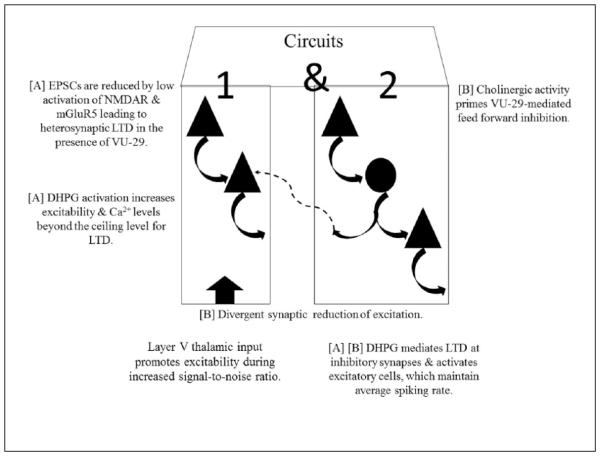Figure 6.
mPFC circuit schematic based on neuropharmacology. Excitatory post-synaptic current (EPSC) (Hypothesis [A]: circuit 1). mGluR5-mediated reduction in EPSCs is present during baseline conditions but additional recruitment of cells is needed (circuit 2) to cause further reductions by VU-29. Reductions in EPSCs can be due to lower activation of both NMDARs and intracellular Ca2+ release responsible for promoting heterosynaptic LTD (Nishiyama, et al., 2000) or by uncoupling of mGluR5 effectors via Homer1a (Kammermeier and Worley, 2007). Circuit 2, CCH or DHPG recruits both circuit 1 and 2 but DHPG directly activates inhibition via mGluR1 that may lead to LTD at inhibitory synapses. Feed-forward inhibition (Hypothesis [B]: circuit 1). Spiking rate is dictated by the amount of feed-forward inhibition. Circuit 2, CCH or DHPG recruits both 1 and 2. In the case of CCH, excitation is balanced with inhibition via post-synaptic nAChRs and presynaptic mAChRs. However, more excitation is available via CCH for VU-29 to exert its effects by promoting feed-forward inhibition in circuit 2, which predominates due to divergent inhibitory synapses. As average spiking rate was unaltered by the recruitment of inhibition via DHPG, direct mGluR1-mediated LTD of inhibition may have accounted for maintaining control levels of spiking rate at excitatory cells. Triangle: excitatory cell; Circle: inhibitory cell.

